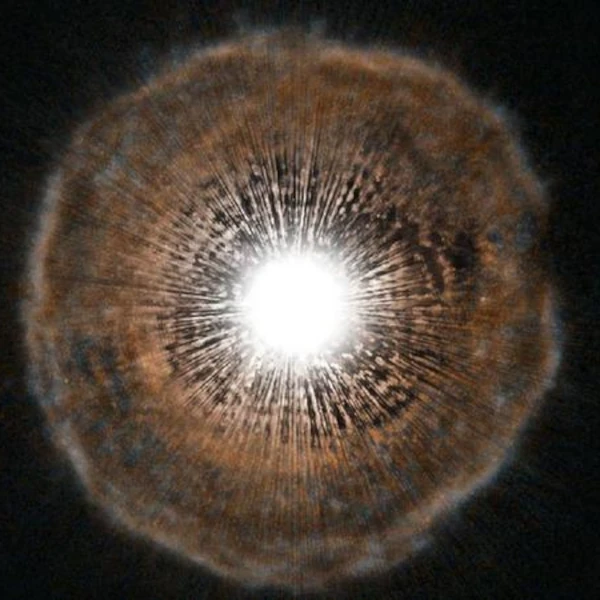
U Camelopardalis is not just a beautiful star to photograph: it is a true cosmic laboratory, where fundamental processes of plasma physics, carbon chemistry, and galactic evolution are experimented on a stellar scale. By observing such carbon stars, we better understand how complex matter forms, disperses, and recycles in the universe.
U Camelopardalis, often abbreviated as U Cam, is a carbon star located about 3000 light-years from Earth, in the faint northern constellation of the Giraffe (Camelopardalis). This type of star, particularly rare, is characterized by an atmosphere containing more carbon than oxygen, which profoundly modifies its spectroscopy, dynamics, and interaction with the interstellar medium.
Classified as a semi-regular variable star (SRb), U Cam is an evolved red giant star, belonging to the asymptotic giant branch (AGB). It represents an advanced phase of stellar evolution for intermediate-mass stars (1 to 8 M☉).
In AGB stars like U Cam, deep convective processes called "third dredge-up" bring nuclear fusion products to the surface, notably carbon formed via the triple alpha reaction (4He + 4He + 4He → 12C). When the carbon content exceeds that of oxygen, molecules such as C2, CN, and CH form in the stellar atmosphere, resulting in spectra dominated by characteristic molecular bands.
These stars play a key role in enriching the interstellar medium with heavy elements, through the intense mass loss they undergo in the form of stellar winds enriched with carbon dust.
What makes U Camelopardalis particularly fascinating is the presence of a quasi-perfectly symmetrical spherical shell of gas surrounding the star. This shell was observed in visible light by the Hubble Space Telescope, revealing a structure resulting from a mass loss episode dated about 700 years ago.
This bubble, about 0.2 light-years in radius, is expanding at a speed of about 23 km/s. It provides an exceptional opportunity to study, under natural conditions, the dynamics of ejected envelopes, the chemistry of carbon dust, and the interaction between successive stellar winds.
The scientific interest of U Cam lies in the possibility of observing a snapshot of a transient process of stellar evolution. Mass loss through discrete shells is still poorly understood: are they regular pulsation cycles? Violent convective episodes? Binary interactions? U Cam, isolated and symmetrical, provides a test case free of major disturbances, allowing to refine models of atmospheric dynamics and radiative transfer in stellar envelopes.
The carbon dust formed in these stars plays a crucial role in the opacity of galaxies, the formation of interstellar grains, and prebiotic chemistry. Furthermore, the enrichment of the interstellar medium with carbon is directly linked to the chemical history of galaxies. Observing shells like that of U Cam allows connecting stellar models to observational constraints on the isotopic and molecular abundances of carbon in the Milky Way.